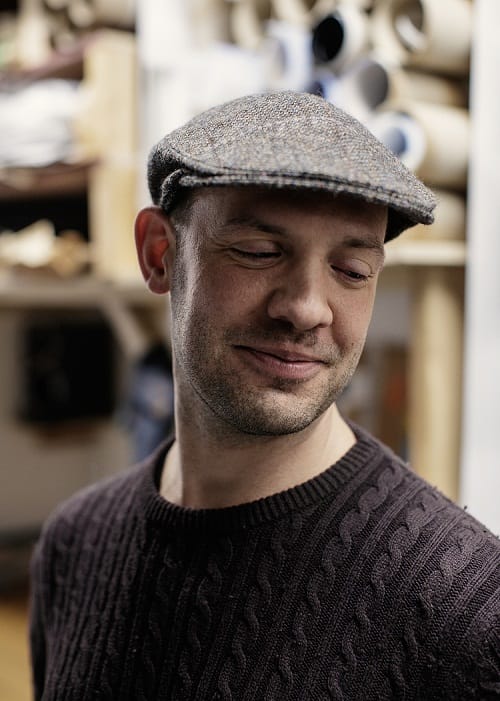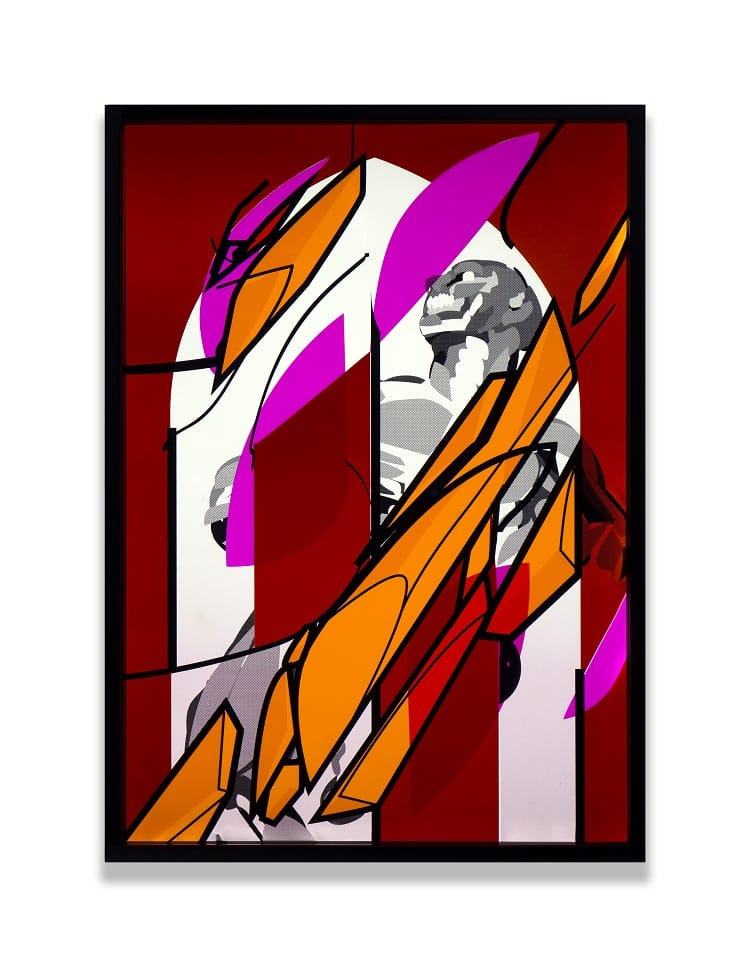What’s the best way to tell area residents about plans for a new asylum shelter nearby?
The government should tell communities directly about plans for new asylum shelters, some activists and politicians say.
While the artist might be best known for his gigantic murals, Earley’s debut exhibition draws on inspiration from his family’s history.

On the third floor of Dollard House on Wellington Quay, artist James Earley and his team suspend a brightly coloured artwork from the ceiling of a bare room.
They delicately attach the piece to dangling metal wire, tighten the screws and steady it. “We’d a bit of a problem but it’s fixed now,” says one of the crew.
On the floor, white tape marks the spots where some of Earley’s new pieces will hang for his forthcoming exhibition Things Fall Apart, each white line separated by about two feet.
Earley is best known for his large works of street art, which he started to create in the late 1990s. His first solo show is a change of direction, though, and a homecoming of sorts.
Natural light filters in, bouncing off pockmarked concrete walls. At the room’s far end a black sheet is pinned across the back wall.
It’s here on the back wall that Earley plans to place works in a different medium, one that is in his blood: real stained glass.
“I wanted something light feeling, an idea of transparency,” says Earley. “But there was a lot to learn.”
Earley walks down a hall and past the chipped walls of the third floor and into a large, bare space, its walls lined with high plush leather stools, overlooking the Liffey.
“I was looking all over Dublin for at least nine months for a space,” he says, as he sits down. The clank of hammers filters in from down the hall.
The idea of Things Fall Apart sat at the back of Earley’s mind for the best part of six years, he says.

He has made his name though gigantic works of public art, the four-storey tall flowers and figures on Bloom’s Hotel in Temple Bar, or his multi-coloured fox mural on City Quay.
In his new show, he has some mixed-media pieces of sprayed enamel and acrylic. But the focus, he says, is on his family’s craft.
While some of his earlier artwork has seemed to hint at stained-glass, with its vibrant primary colours and bold lines, this is the first time he has worked in this tricky medium.
The family business, Earley & Co. Studios, dates back to 1852 and dominated Dublin’s stained-glass scene for decades, says Earley.
The studios had an in-house style and worked on important commissions like the windows of St Teresa’s Church on Clarendon Street as well as less well-known works, like a round window in a long-vacant building on Camden Street.
Earley studied at the National College of Art and Design, but his formative years were spent around his grandmother Maura, an artist, and his grandfather Leo, a master stained-glass craftsman.
“When we went over to their house, we’d be painting and drawing all the time,” says Earley.
Stained glass skipped an Earley generation, though. Earley’s father didn’t go into the family trade and the practice closed in 1975, partly owing to the fact that they weren’t keen on secular work and preferred ecclesiastical commissions.
He spent his youth tagging and making street art, and his move into stained glass is something of a “coming of age” experience for him, he says.
As Earley researched his family’s craft, he was struck by how his similar his colour choices and style were to those of his great-grandfather Leo, he says. He gives a half-smile. “Is this genetics or … ?”
Ahead of this show – which he’s been working on for the past seven months – Earley sought out his great-uncle Bill, who used to work at the family stained-glass studio. “He’s the last of all of them,” he says.
Taking what he learnt, Earley got a studio space off Cork Street in Dublin 8 and set aside several months to work on the craft. “I had to save money to do it.”
Stained glass isn’t easy. You have to know the process, so you understand the parameters you have to work within, says Earley, as he reveals one of the 17 works he has created for his solo show.
The panel is six feet tall, one of the larger works in the exhibition. It shows a series of patterns and primary colours – blues and reds and green. It is one of the first pure stained-glass pieces that Earley has created.
To do that, he didn’t just tap into the knowledge of his great uncle. He also sought out Evan Connon.

When Connon was 15 years old, his family realised he had a knack for drawing. He was brought to Earley’s great-uncle’s studio, where he started an eight-year apprenticeship.
“Without pay for eight years, I stuck it out,” says Connon, who set up his own studio in Crumlin in 2002.
Connon sees his practice as an antidote to amateur stained-glass-making. “It’s gone terribly bad. The standard is very bad in this country,” he says. “As we explained to James, it’s not a two-week process. He just needed a little bit of guidance.”
Patience is key, Connon says. And there is no guarantee of recognition.
Stained-glass artists tend to only receive posthumous recognition and that also puts people off going into it, says Connan. “No one will ever recognise you until the day you’re dead. It’s not what you achieve at an early age. It’s what you leave behind.”
For each stained-glass work, Earley started with a sketch.
He refined that on Adobe Illustrator on his laptop, consulting with Connan, and then went to Liverpool to pick the right glass, and laid it out back in Connan’s studio. “I geek out on process,” says Earley.
Connan helped him cut the glass, then the team there “leaded it up”, creating the clean dark lines that divide the works into fragments of colour.
“There are so many different variables,” says Earley, as he walks back towards the main exhibition space. He seems drained.
But he gets a kick from learning it all. “I sponged it all up,” he says. “Why is a pink piece of stained glass so expensive, for instance? Because there’s gold in it.”
All of the works that he has created are originals, Earley says. “I don’t see the point of creating something that has been done before or is a pastiche.”
There’s one week left to go before his solo show opens. With most of the works complete, Earley is focused on getting “this virgin space, untouched” in order.
Things Falls Apart runs from 24 May until 3 June at Dollard House on Wellington Quay.